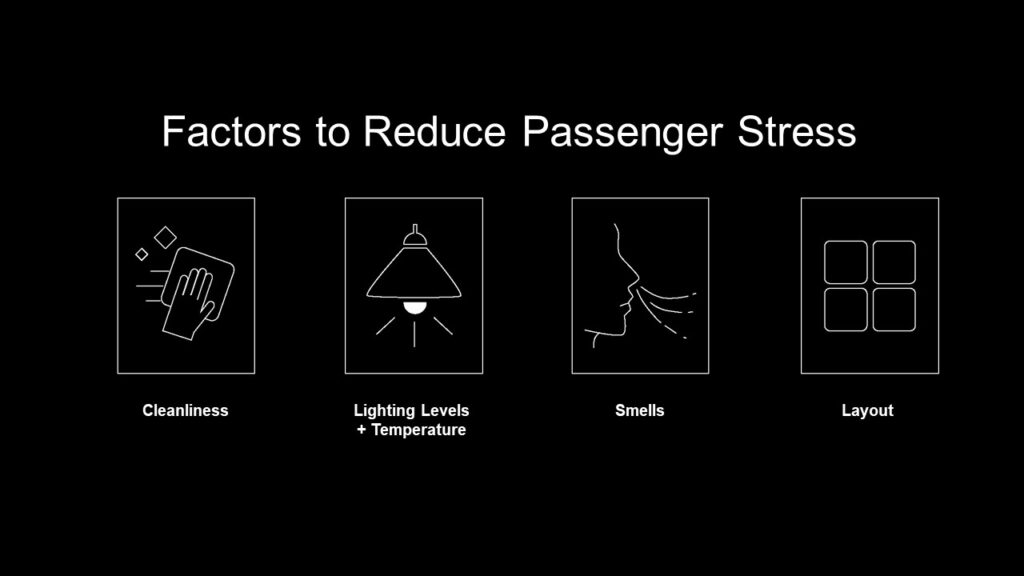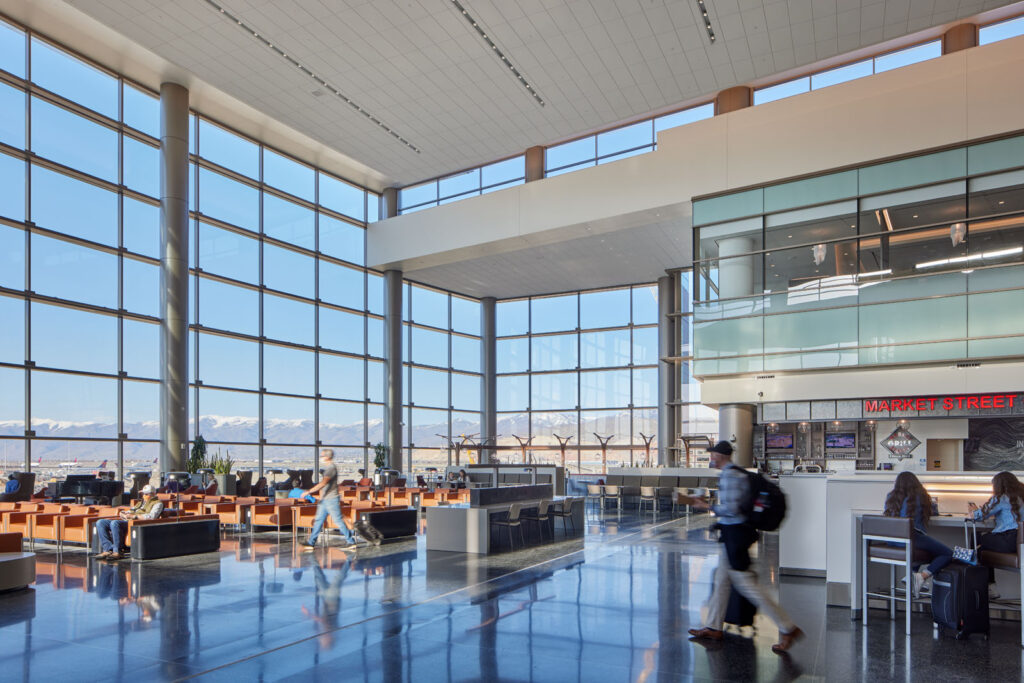Kirtan Patel, senior principal – technical in HOK’s Aviation + Transportation group, shares strategies to alleviate passenger stress at airports.
Imagine rushing through an airport, stressed about making a tight connection; the long security lines, frantic scramble for seats at the gate and incessant announcements. Even the most seasoned travelers would feel a touch of anxiety. Now, picture that scene with one crucial difference: the airport’s design works to ease your stress instead of adding to it. This isn’t a dream – it’s the future of air travel. Studies have shown that to foster a sense of calm, designers can focus on four key factors that reduce passenger stress: lighting, cleanliness, scents and layout.
 Factor 1: Illuminate the way
Factor 1: Illuminate the way
Lighting profoundly affects people’s moods, energy and circadian rhythms. Look at natural light, for example. It helps our bodies produce serotonin, a hormone associated with feelings of alertness and well-being.
Different light temperatures evoke distinct responses. A warm orange glow, reminiscent of sunrises and sunsets, encourages relaxation. Neutral white light, akin to mid-morning and afternoon daylight, promotes gentle alertness. Cool blue light, with its bright and intense quality, stimulates sharper attention.
Airport security checkpoints are often a source of stress. Neutral white lighting here maintains passenger alertness without overwhelming the senses. Beyond security, concourses washed in soothing warm oranges and neutral white light, complemented by floor-to-ceiling windows, create a tranquil environment to spend time in.

At Zurich Airport’s new Dock A (above), large windows will let natural light flood deep into the building, creating a calming ambience for passengers waiting during layovers.

Pic: Seamus Payne Photography
Natural, tunable indoor and outdoor lighting can also help arriving passengers align the circadian rhythms of their bodies to the local time zone. At Tampa International Airport, outdoor terraces have been installed to help to ease passengers’ travel fatigue.
Factor 2: Cleanliness
Public sensitivity toward cleanliness has dramatically increased in the wake of the Covid-19 pandemic. This is especially true in high-touch airport areas like restrooms, dining spaces and holdrooms.

PIc: Jeff Goldberg Photography
LaGuardia Airport’s new Terminal B features a design that minimizes touchpoints in restrooms. Touchless faucets, hand dryers and a spacious layout between vanities, urinals and toilet stalls enhance cleanliness and passenger comfort. The dining areas in Terminal B feature open, organized seating and tables that can be easily sanitized by maintenance staff.

Pic: Bruce Damonte Photography
Salt Lake City International Airport’s new passenger terminal takes a similar approach. Individual plush seats in waiting areas provide comfort while enhancing passengers’ autonomy and feelings of safety in a clean environment.
Factor 3: A breath of fresh air
The impact of scent on people’s emotions is far from trivial. Studies have shown that strategically using scents in restrooms and dining and seating areas can distract passengers from their current stresses. Designers can infuse pleasant scents through air ventilation units in high-stress areas like security checkpoints to support passenger well-being. Passengers intuitively take a deep breath, helping them relax and de-stress.
Factor 4: Disney’s lessons in layout
Business strategy consulting firm ICF has found that for every 10 minutes passengers spend in the security line, their spending in the terminal decreases by 30%. Conversely, relaxed and satisfied passengers will likely pay 7% more on retail and 10% more on duty-free items.
Consider Disney. Despite theme park lines that can stretch for hours, the company knows how to effectively maintain an enchanting atmosphere. The real magic isn’t in the pixie dust but in the clearly marked zones and engaging diversions that keep guests entertained, informed and distracted from the wait.
Applying this principle to airports, LaGuardia’s Terminal B security lanes feature clear markings and visual cues leading to the screening area and beyond. The lanes sit under a uniform, monolithic ceiling, creating a sense of directionality that helps passengers intuitively understand their path. Post-security, Terminal B offers passengers a spacious area to collect themselves, and ‘pocket parks’ (top) in the concourse where they can decompress.
Let calming environments take flight
Designers have made great progress recently in environmentally responsible airport design. But we must also care for the passengers. By making thoughtful choices about lighting, cleanliness, fresh air and layout, we can create well-functioning airports that support and nurture the well-being of everyone who passes through the airport.

